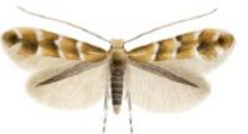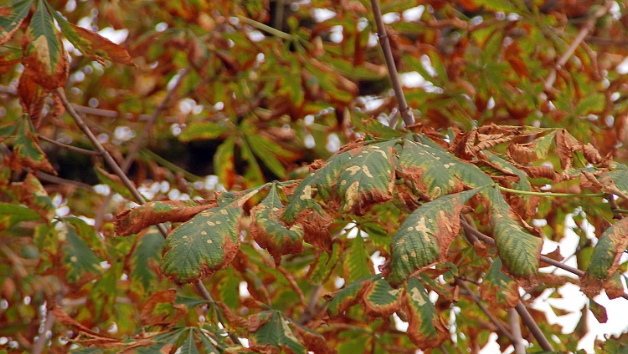 There is a new pest sweeping through Britain -the horse chestnut leaf-mining moth (Cameraria ohridella). It isn’t so much the adult (moth) which is the problem but the juvenile stage or caterpillar. Tiny caterpillars just a few millimetres long munch their way through a leaf from the inside, eventually causing the leaf to go brown and drop early.
There is a new pest sweeping through Britain -the horse chestnut leaf-mining moth (Cameraria ohridella). It isn’t so much the adult (moth) which is the problem but the juvenile stage or caterpillar. Tiny caterpillars just a few millimetres long munch their way through a leaf from the inside, eventually causing the leaf to go brown and drop early.
According to a Forestry Commission report this moth was first discovered in Macedonia, Northern Greece in 1985 where it was described as a new species. Since then it has spread rapidly throughout Europe to Britain. The first documented case in England was in Wimbledon, in 2002.

The rapid spread of the moth has been assisted by inadvertent transportation by vehicles as well as the wind. The distribution is now quite extensive, the moth can be found in almost every part of England and is now spreading into Wales and Scotland, see map below.
 The adult female moth, which is about 5mm long, lays her eggs on the surface of a horse chestnut leaf in early spring. The eggs hatch about 2 or 3 weeks later. On average each female can lay up to about 40 eggs. After hatching the tiny caterpillars burrow into the leaf and eat their way through the leaf material creating clear tracks along the leaf as it progresses.
The adult female moth, which is about 5mm long, lays her eggs on the surface of a horse chestnut leaf in early spring. The eggs hatch about 2 or 3 weeks later. On average each female can lay up to about 40 eggs. After hatching the tiny caterpillars burrow into the leaf and eat their way through the leaf material creating clear tracks along the leaf as it progresses.
In long, warm, dry seasons 5 generations of the moth might be produced, although more commonly in Europe it is an average of 3 generations per season. The last generation of the summer overwinter in the leaf litter and are extremely hardy being able to survive temperatures as low as -230 C.
Although the leaf is often destroyed and falls in early summer, it does not appear to do any lasting damage to the tree. Usually, the tree will produces leaves  (flush) as normal the following spring. However, one consequence is that the fruits of the horse chestnut, known as conkers can be reduced in size compared to an uninfected tree. This is thought to come about as a consequence of early leaf drop which then reduces the amount of nutrients going to fruit formation.
(flush) as normal the following spring. However, one consequence is that the fruits of the horse chestnut, known as conkers can be reduced in size compared to an uninfected tree. This is thought to come about as a consequence of early leaf drop which then reduces the amount of nutrients going to fruit formation.
There isn’t anything which can be used to eradicate the moth as spraying a tree is impractical. However, removing fallen leaves and composting or burying them will prevent the moth from emerging to continue the life-cycle.
There is no compulsory requirement to report sightings of this pest, although the Forestry Commission would be glad to receive any information in order that it may track the progress of this pest.
